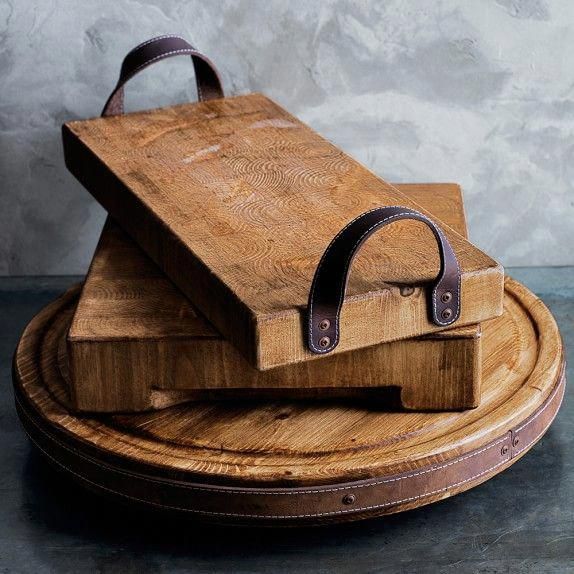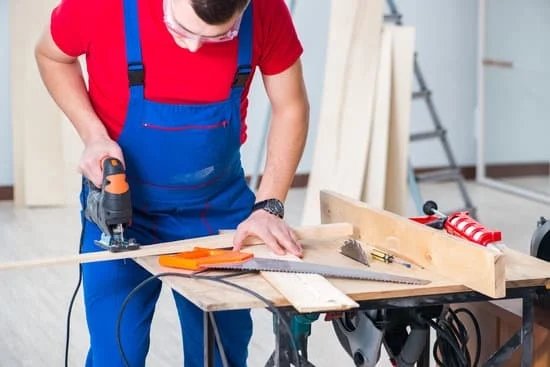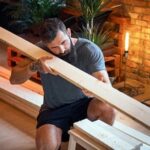Are you wondering, “What kind of nailgun do I need for woodworking?” Choosing the right nailgun is essential for any woodworking project. From pneumatic to cordless options, there are various factors to consider when selecting the best nailgun for your needs. In this article, we will explore the different types of nailguns, discuss the pros and cons of each, and provide tips on how to use them safely and maintain them properly.
When it comes to woodworking, having the right tools can make all the difference in the outcome of your project. One of the most important tools in a woodworker’s arsenal is a nailgun.
With so many options available on the market, it can be overwhelming to determine which type of nailgun is best suited for your specific woodworking needs. This article aims to provide clarity on this topic and help you make an informed decision when selecting a nailgun for your projects.
In the following sections, we will delve into the different types of nailguns available for woodworking, including pneumatic and cordless options. We will also compare brad nailers with finish nailers, as well as explore specialty nailguns designed for specific tasks such as flooring, roofing, and trim work. Additionally, we will cover important safety precautions and maintenance tips to ensure that your chosen nailgun performs at its best throughout your woodworking endeavors.
Types of Nailguns
When it comes to woodworking, having the right tools can make all the difference in the quality and efficiency of your projects. One essential tool to have in your arsenal is a nail gun, but with so many options available, it can be overwhelming to decide which type is best for your woodworking needs. Here are the different types of nail guns commonly used in woodworking:
- Pneumatic Nailguns: These nail guns are powered by compressed air and are popular among professional woodworkers for their power and reliability. They require an air compressor to operate, making them less convenient for mobile projects, but they deliver consistent performance and are suitable for a wide range of woodworking tasks.
- Cordless Nailguns: Cordless nail guns are powered by rechargeable batteries, offering portability and convenience. They are ideal for use in areas where access to power sources may be limited, and they eliminate the need for cumbersome air hoses. However, they may not provide as much power as pneumatic nail guns.
- Brad Nailers vs Finish Nailers: Within the realm of pneumatic and cordless nail guns, there are two main types commonly used in woodworking: brad nailers and finish nailers. Brad nailers are designed for delicate trim work and light-duty fastening, while finish nailers are better suited for more heavy-duty tasks such as attaching baseboards and crown molding.
Considering what kind of nailgun do i need for woodworking makes a big difference in terms of efficiency, precision, and overall project success. Each type of nail gun has its own advantages and disadvantages, so it’s important to carefully consider your specific woodworking needs before making a purchase. Whether you prioritize power, portability, or versatility, there’s a nail gun out there that’s perfect for you.
Choosing the Right Nailgun
When it comes to woodworking, choosing the right nailgun is essential for ensuring the success of your projects. With so many options available, it can be overwhelming to determine which nailgun is best suited for your specific woodworking needs. However, by considering a few important factors, you can make an informed decision and select the perfect tool for the job.
Project Requirements
The type of woodworking projects you typically work on will be a significant factor in determining the best nailgun for your needs. For example, if you frequently work on smaller, delicate pieces such as trim or molding, a brad nailer may be the most suitable option. On the other hand, if you often work on larger projects such as furniture or cabinet making, a finish nailer may be more appropriate.
Power Source
Another important consideration when choosing a nailgun for woodworking is the power source. Pneumatic nailguns are powered by compressed air and are typically lightweight and capable of driving nails with precision. Cordless nailguns, on the other hand, are battery-powered and offer greater portability and convenience. Consider your workspace and project requirements to determine which power source would best suit your needs.
Comfort and Ease of Use
Comfort and ease of use are also vital factors to consider when selecting a nailgun for woodworking. Look for features such as ergonomic design, adjustable depth settings, and easy jam clearing mechanisms to ensure that using the nailgun will be comfortable and efficient.
Additionally, consider the weight of the tool and how it feels in your hand to ensure that it will be comfortable for extended periods of use. By evaluating these factors, you can confidently choose a nail gun that will meet your woodworking needs effectively and efficiently.
By carefully considering project requirements, power sources, comfort features when selecting a nailgun for woodworking tasks ensures that you select a tool that meets your specific needs-making your future woodworking endeavors much more enjoyable and successful.
Pneumatic Nailguns
Understanding Pneumatic Nailguns
Pneumatic nailguns, also known as air nailers, are powered by compressed air from an external compressor. These nailguns are popular among woodworkers due to their power, speed, and reliability. The compressed air drives the nails into the wood with precision and consistency, making them a favorite choice for professionals and hobbyists alike.
The Pros of Using Pneumatic Nailguns
One of the main advantages of pneumatic nailguns is their power. They can easily drive nails into hardwoods and dense materials without compromising on performance. Additionally, pneumatic nailguns are known for their speed and efficiency. They can quickly complete woodworking projects, saving time and effort in the process. Another benefit is their reliability – when properly maintained, pneumatic nailguns can provide consistent results over time.
The Cons of Using Pneumatic Nailguns
While pneumatic nailguns have numerous advantages, they also come with some drawbacks. One of the main downsides is the need for an external air compressor to power the tool. This requirement makes pneumatic nailguns less portable than cordless options and adds an extra cost if you don’t already own a compressor.
Additionally, the noise produced by both the compressor and the nailgun itself can be a concern for some users. Lastly, pneumatic nailguns tend to be heavier than cordless models which may cause strain during prolonged use.
Given these pros and cons, it’s important to carefully consider whether a pneumatic nailgun is the right choice for your woodworking needs or if another type of nailgun would be more suitable.
Cordless Nailguns
Cordless nail guns have become increasingly popular in the woodworking industry due to their convenience and portability. These tools are powered by rechargeable batteries, eliminating the need for an air compressor or hose. Cordless nail guns are available in a variety of sizes and designs, making them suitable for different woodworking projects.
One of the main advantages of cordless nail guns is their portability. Woodworkers can easily move around with these tools without being restricted by hoses or power cords. This feature is particularly beneficial when working on large projects or in hard-to-reach areas. Additionally, cordless nail guns are quieter than pneumatic ones, creating a more pleasant work environment.
However, there are some disadvantages to consider when using cordless nail guns for woodworking projects. The first is that they tend to be heavier than pneumatic models due to the built-in battery pack, which can cause fatigue during extended use. Additionally, cordless models may have a slower firing rate compared to pneumatic nail guns, which may impact productivity on larger projects.
When choosing a cordless nail gun for woodworking, it’s important to consider factors such as the power source, size and weight, and firing speed. Different types of woodworking projects may require different features in a nail gun, so it’s essential to assess your specific needs before making a purchase.
| Advantages | Disadvantages |
|---|---|
| Portability | Heavier than pneumatic models |
| Quiet operation | Slower firing rate |
Brad Nailers vs Finish Nailers
When it comes to woodworking, selecting the right nailgun is crucial in ensuring that your projects are completed efficiently and with precision. Two commonly used nailguns in woodworking are the brad nailer and the finish nailer. Each one has its own set of advantages and disadvantages, and understanding their differences can help you make an informed decision for your woodworking needs.
Brad nailers are typically smaller and lighter than finish nailers, making them ideal for delicate trim work and other detailed woodworking projects. They use thin 18-gauge nails that leave behind small holes, which can easily be concealed with putty or wood filler. Brad nailers are perfect for attaching thin pieces of wood without splitting them, making them a popular choice for cabinetmaking, furniture building, and other fine woodworking tasks.
On the other hand, finish nailers use thicker 15 or 16-gauge nails, making them more versatile when it comes to fastening larger pieces of wood together. These nails have a greater holding power compared to brad nails, making finish nailers suitable for securing baseboards, crown moldings, and other heavier trim work. However, because of the thicker nails they use, finish nailers may not be suitable for delicate or thinner pieces of wood as they may split upon impact.
When deciding between a brad nailer and a finish nailer for your woodworking projects, it’s important to consider the type of work you’ll be doing and the materials you’ll be working with. Taking into account factors such as the size and weight of the nails needed, as well as the level of precision required will help you determine which type of nailgun is best suited for your specific woodworking needs.
Specialty Nailguns
When it comes to woodworking, having the right tools for the job is essential. This includes selecting the appropriate nailgun for specific woodworking tasks such as flooring, roofing, and trim work. Specialty nailguns are designed to meet the unique requirements of these specific projects, offering features and capabilities that cater to their distinct needs.
For flooring projects, a flooring nailer or stapler is the ideal choice. These specialty nailguns are specifically designed for installing various types of flooring materials, including hardwood, engineered wood, and laminate. They often feature a larger magazine capacity to hold more fasteners, as well as a mallet or hammer actuation system for driving nails or staples with precision into the subfloor.
In roofing applications, a coil nailer is commonly used to secure shingles, roof underlayment, and insulation boards. These nailguns typically have a magazine that holds coiled nails, allowing for more efficient and continuous nailing without the need for frequent reloading. Additionally, many coil nailers are designed with angled magazines to easily reach tight spaces on rooftops.
When it comes to trim work in woodworking projects, a brad nailer or finish nailer is often utilized. Brad nailers are ideal for delicate trim pieces and light molding due to their smaller gauge nails that leave minimal visible holes.
On the other hand, finish nailers are suitable for thicker trim pieces and heavier moldings as they use larger gauge nails that offer greater holding power. Understanding the specific requirements of your woodworking task is crucial in determining what kind of specialty nailgun you need for optimal results.
Tips for Using a Nailgun Safely
When using a nailgun for your woodworking projects, it is crucial to prioritize safety at all times. Whether you are a beginner or an experienced woodworker, understanding important safety precautions when operating a nailgun can prevent accidents and injuries.
First and foremost, it is essential to wear appropriate safety gear when using a nailgun. This includes protective eyewear to shield your eyes from any flying debris and ear protection to minimize exposure to loud noise. Additionally, wearing gloves can provide an extra layer of protection for your hands.
Another important safety precaution to keep in mind is to always point the nailgun away from yourself and others when loading nails or preparing to fire. Accidental discharges can result in serious injury, so being mindful of the direction in which the nailgun is pointing is critical.
Lastly, before using a nailgun, always familiarize yourself with its specific features and functions. Read the user manual provided by the manufacturer and ensure that you understand how to properly load nails, adjust the depth settings, and operate the trigger. This will help you avoid potential mishaps while using the nailgun for your woodworking projects.
| Safety Precautions | Importance |
|---|---|
| Wear appropriate safety gear | Protect eyes, ears, and hands from potential harm |
| Avoid pointing the nailgun towards yourself or others | Prevent accidental discharges and injuries |
| Familiarize yourself with the nailgun’s features and functions | Minimize potential mishaps by understanding how to properly operate the tool. |
Maintenance and Care
In conclusion, choosing the right nail gun for woodworking is crucial in ensuring the success of your projects. Understanding the different types of nail guns available, such as pneumatic, cordless, brad nailers, finish nailers, and specialty nail guns designed for specific tasks like flooring and roofing, is essential in making an informed decision.
Each type has its own advantages and disadvantages, so it’s important to consider factors such as power source, portability, and the specific needs of your woodworking projects.
Once you’ve selected the appropriate nail gun for your woodworking needs, proper maintenance and care are essential to ensure its longevity and performance. Regular cleaning and lubrication of your nail gun will help prevent malfunctions and keep it in top condition.
It’s also important to follow safety precautions when operating a nail gun to prevent accidents or injuries. By taking these steps, you can maximize the lifespan of your nail gun and continue to produce high-quality woodworking projects.
In summary, understanding what kind of nailgun do i need for woodworking involves thorough research on the different types available and carefully considering your specific woodworking requirements. Once you have chosen the right nail gun for your needs, practicing proper maintenance and care will ensure that your tool performs at its best for years to come. With the right knowledge and attention to detail, you can achieve professional results with your woodworking projects using the appropriate nail gun.
Frequently Asked Questions
What Type of Nail Gun Is Best for Woodworking?
The best type of nail gun for woodworking is typically a pneumatic or cordless finish nailer. These nail guns are versatile and can handle a variety of woodworking tasks, including attaching trim, molding, and other finishing touches. They are also powerful enough to drive nails into hardwoods without splitting the wood.
Is a Brad Nailer or Finish Nailer Better for Woodworking?
When it comes to choosing between a brad nailer or finish nailer for woodworking, it ultimately depends on the specific task at hand. Brad nailers are better for smaller, delicate trim work and for attaching thin pieces of wood together.
Finish nailers, on the other hand, are more suitable for heavier trim and larger woodworking projects. It’s important to consider the size and thickness of the nails needed for the job when deciding between the two.
What Kind of Nail Gun Do I Need for Small Projects?
For small projects, a brad nailer is often the best choice. These smaller nail guns use thinner 18-gauge nails that are less likely to split delicate pieces of wood or leave noticeable holes.
Brad nailers are ideal for smaller woodworking tasks like assembling picture frames, building small furniture pieces, or attaching trim in tight spaces. Their precision and smaller nail size make them well-suited for these types of projects.

Hi everyone! I’m a woodworker and blogger, and this is my woodworking blog. In my blog, I share tips and tricks for woodworkers of all skill levels, as well as project ideas that you can try yourself.





